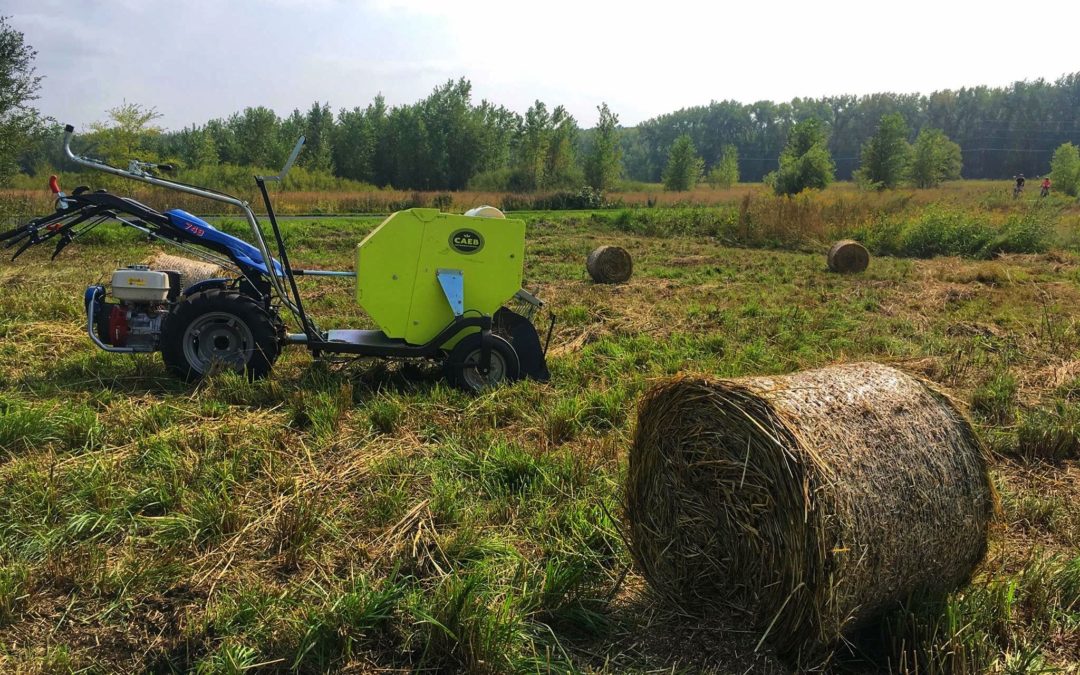Prescribed Haying
Prairie once covered vast swathes of the United States. In Minnesota, there is only around 1% of prairies remaining. For those of you that oversee or have your own prairie, you probably already understand all the benefits and joys of observing a prairie and the interested and unique species they attract. Each year the prairie adapts differently to weather changes and provide a new canvas of rotating colors and textures throughout the year. You never know what birds, insects and other wildlife you will see. In order to have a healthy prairie, certain maintenance activities need to occur: whether its invasive species control, prescribed fire, or occasionally woody removal, prairie requires routine inputs to maintain the grass and flower features. I am here to introduce another option for prairie enthusiasts, how prescribed haying can be the right choice for increasing the health and longevity of your prairie.
The Bale
Haying your prairie creates a product, the hay! You can use this for livestock feed or bedding, as a compost option in your garden (time it so you don’t have seed heads), or as an option for seeding and expanding your prairie in newly prepped areas. I’ve even used prairie bales for strawbale gardening, or decorations in the fall. You could even sell your hay and bring in some extra cash.
Prescribed Fire Alternative
Prescribed burns are great for prairie, but they are logistically complex, can be dangerous, and are expensive. You can forego the permitting and contracting process and hay instead. Haying removes biomass similarly to burning, and although it doesn’t quite mimic it, it does provide a lot of similar benefits by exposing soil and allowing for quicker green up in the Spring. By the way, it’s way less impactful for pollinators and butterflies, and can increase diversity in areas dominated by singular species.
Vegetation Impact
When you think of haying, you think large tractors and big huge round bales strewn across a field, but it doesn’t have to be that way. Haying is the process of cutting and removing the vegetation. This can be done with a smaller, more surgical approach. Using a mower, whip, or old school scythe, one can target certain areas of their prairie or target species they want to alter. I’ve often used a whip and targeted aggressive forbs species, or hayed taller grass species. This can delay flowering, increase blooms, and decrease the height of both grasses and flowers. I will rotate haying and thus have the same species of flowers blooming at different times of the year. It allows me to be the artist of my prairie.
These are a few benefits for why prescribed haying should be a part of your toolbox when managing a prairie. Feel free to reach out to discuss further or comment on ways you’ve incorporated this tactic into your landscape.
Sean Wickhem
Read more about our land management services at:
https://landbridge.eco/land-management/
Follow this link to a Minnesota Landowner Prairie Management Guide:

Recent Comments